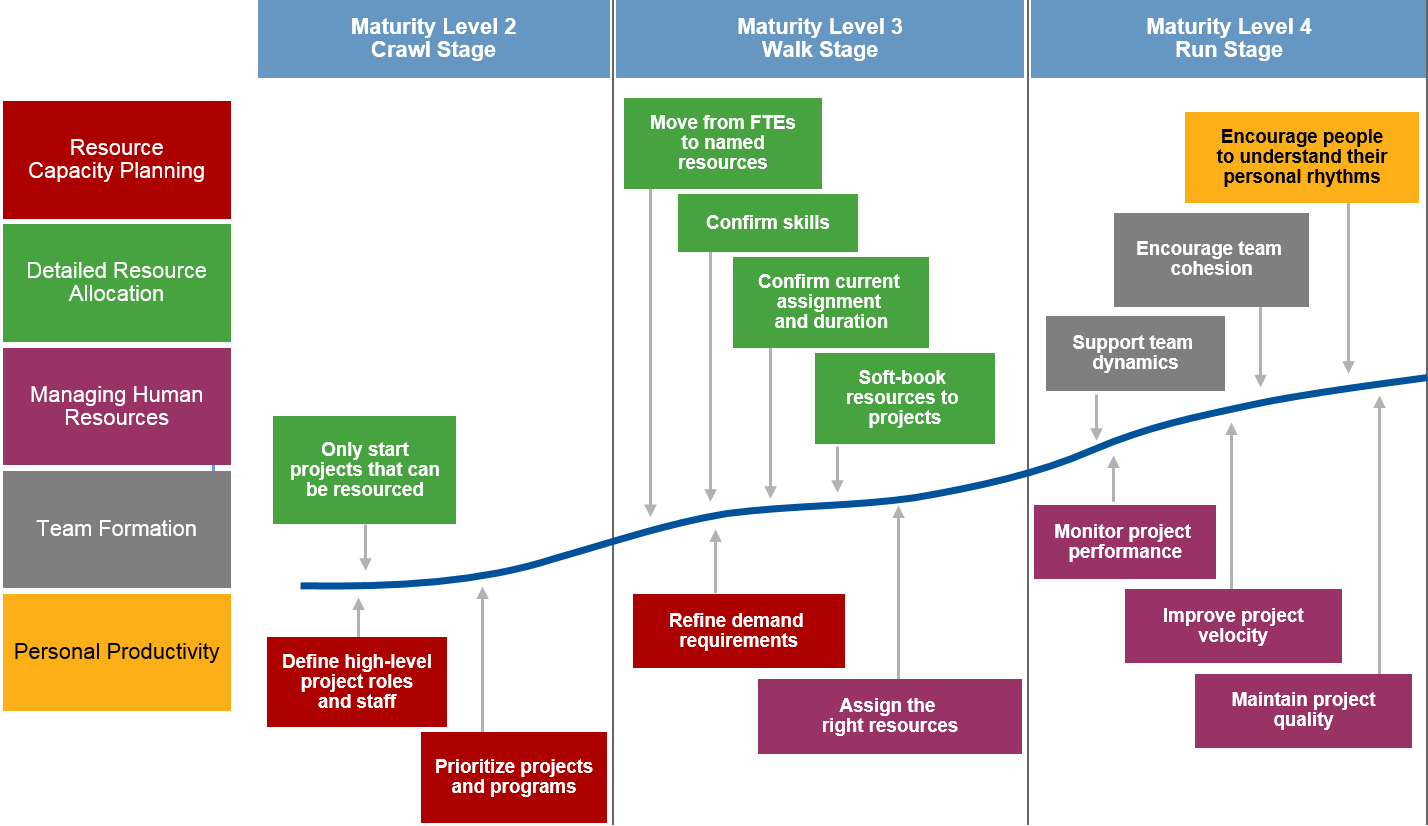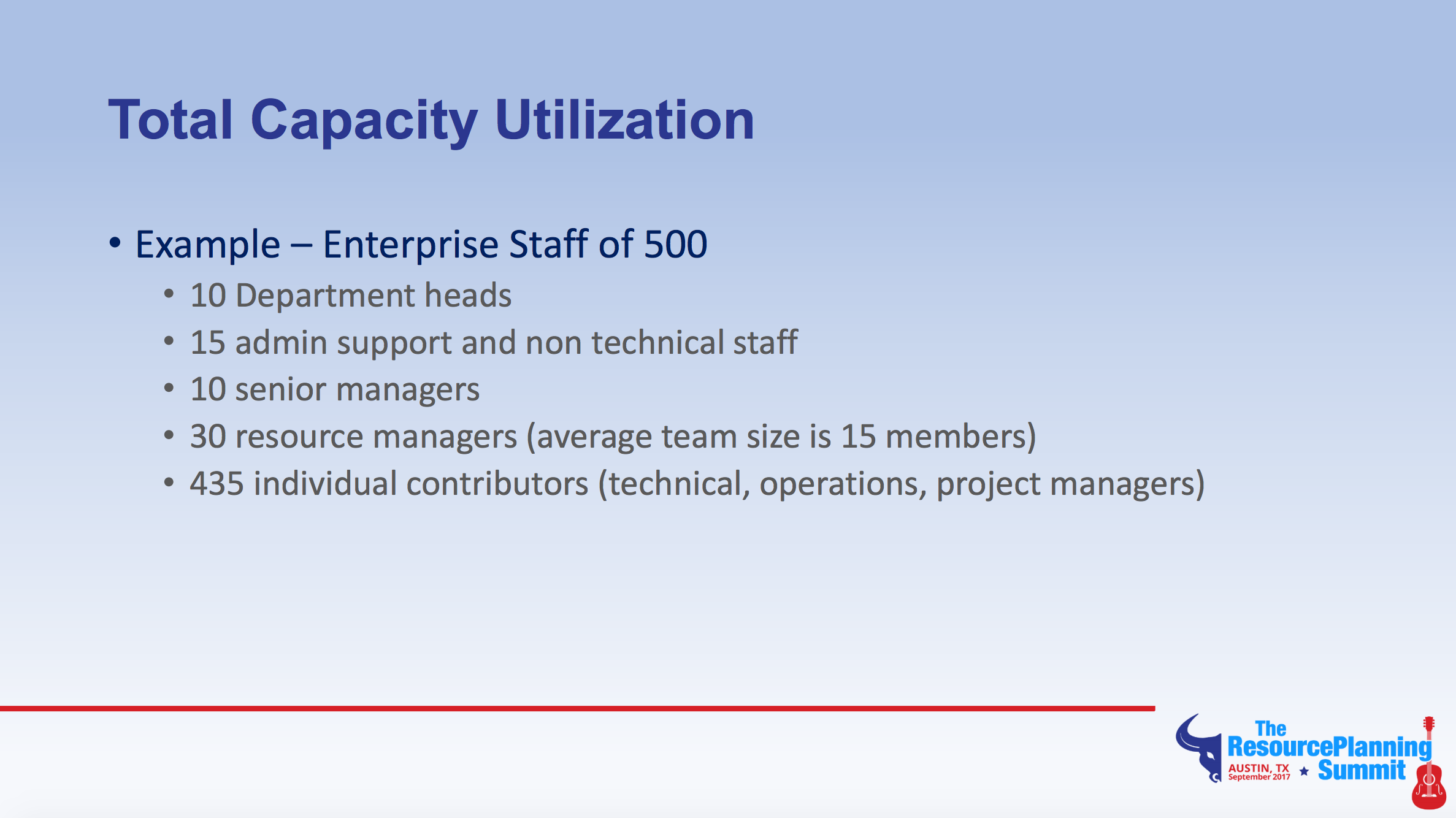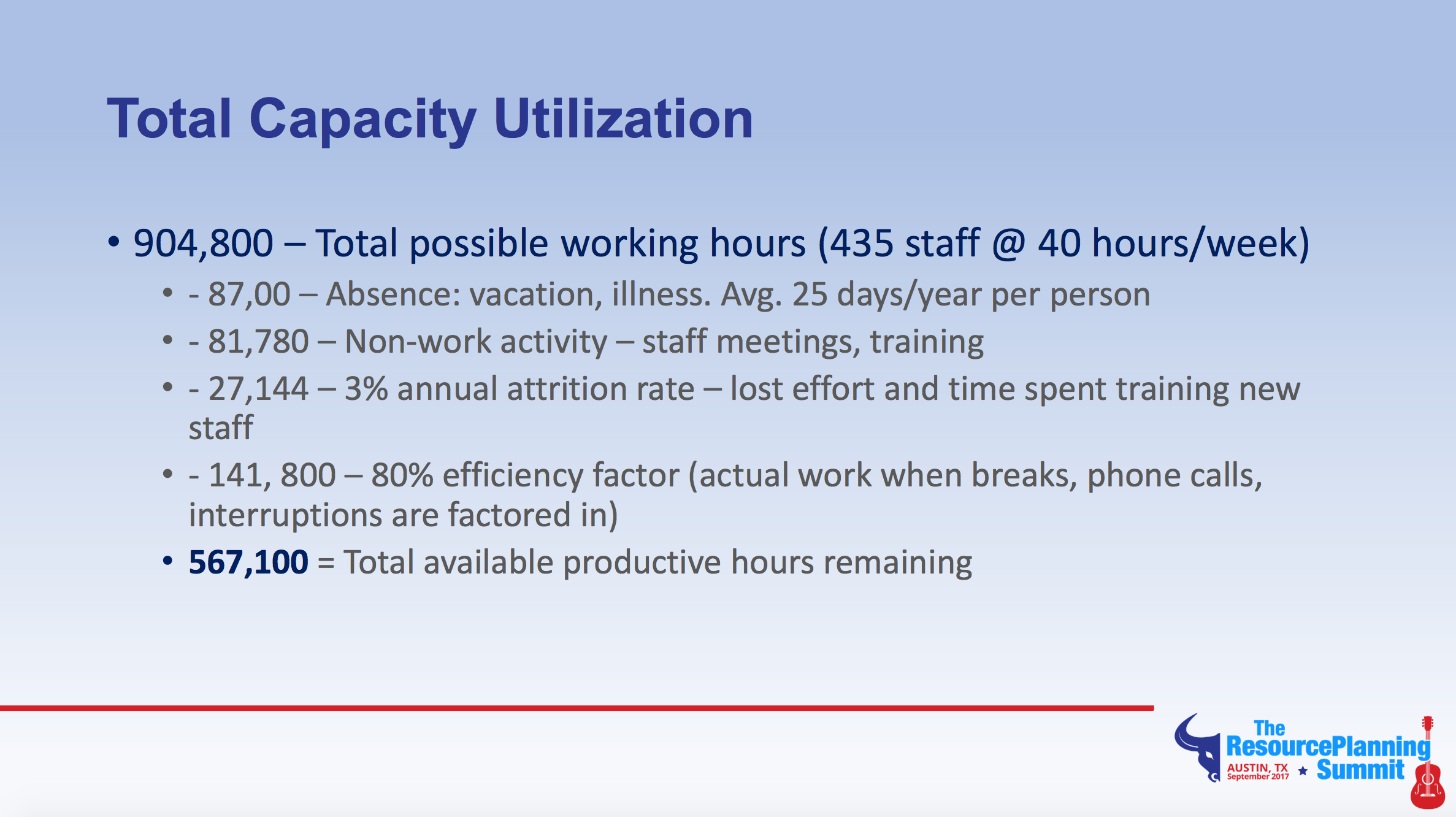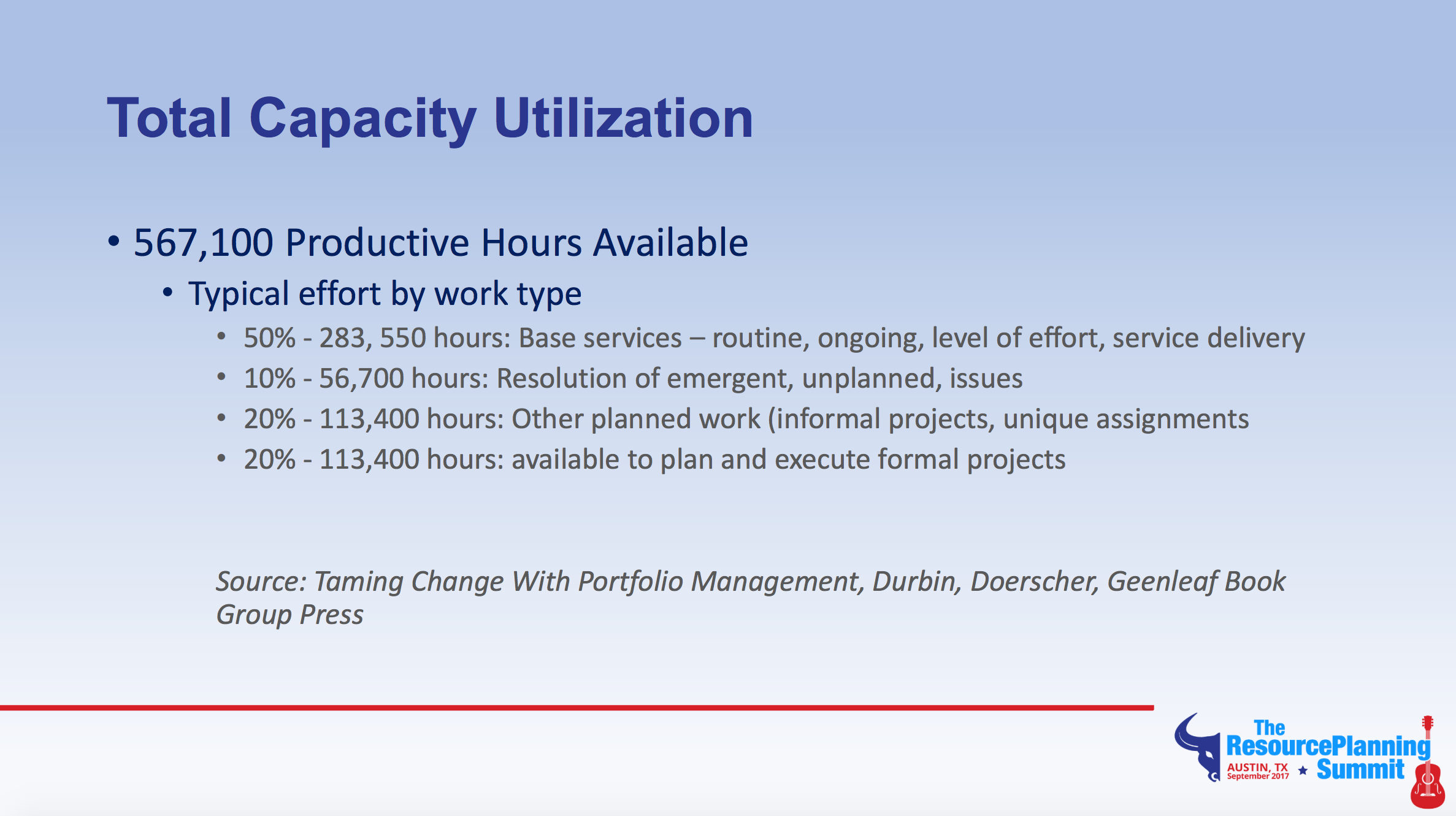3 Takeaways from PDWare’s Resource Planning Summit and How To Apply Them to Your Small Business
Every year, project and resource management professionals come together to learn, share and network during the renowned Resource Planning Summit, hosted by PDWare.
The conference brings together thought leaders and project professionals to discuss common project management challenges among businesses. These include capacity planning, managing a portfolio, dealing with change and promoting best practices within organizations.
I not only attended this year’s summit, but was honored to present as well, sharing Software Advice’s Project Management Needs Cycle research and outlining the steps a small business should follow when selecting and rolling out a new resource management system.
Although much of the conference was geared toward large enterprises, the lessons at the core of many of the presentations are applicable for small and midsize businesses (SMBs) as well.
In this article, we’ll review three of the top resource management best practices presented at the event, and emphasize how SMBs can best apply these strategies at their organizations.
Here are the key takeaways we’ll cover:
What Gets Measured Gets Improved
Bottlenecks Define Your Project Throughput
Estimates Should Be Reliable, But Won’t Be Accurate
Key Takeaway #1: What Gets Measured Gets Improved
Ruth Fairley, the senior director of the global project management office (PMO) at ON Semiconductor, offered several tips on how to balance resource capacity with demand, including:
Track time,**** for all resources and all types of work.
You have to record time for your resource planning strategy to work. If you don’t record time, you don’t have an effective strategy.
Be honest. Require all employees to log all hours, including overtime.
Logging hours shouldn’t be tied to payroll, but done so you gain a true understanding of the time and effort required for various tasks and types of projects.
This knowledge helps you estimate resources more reliably when planning future projects and outlining your portfolio.
Use Key Performance Indicators (KPIs). A consistent set of metrics can help you identify trends over time.
KPIs can be used to measure resource estimating accuracy (planned vs. actual resources used).
Tracking should encompass resource allocation by month, by team/skill or named resource per team/skill.
These metrics should contain the “actual + forecast” of the planned resource estimates at four key points in time: roadmap estimate, initiation/discovery phase exit, planning phase exit and time to go live.
How to apply this RM best practice: What gets measured gets improved, which is why time tracking should be a critical component of your resource management strategy.
Tracking employee time provides you with valuable insight into your resources. This helps you to identify critical resources, narrow in on your team’s optimal throughput and red-flag potential bottlenecks.
With this insight, you can more effectively regulate the flow of work and mitigate bottlenecks, while also identifying areas for improvement, such as providing training to continually develop your workforce.
Additionally, comparing “actual time” to “estimated time” helps executive leadership better understand the capacity of your teams, which allows them to make more informed decisions about the types of projects to fund in the future.
Key Takeaway #2: Bottlenecks Define Your Project Throughput
Donna Fitzgerald, president of Nimble PM and former research VP at Gartner, examined the reasons why so many businesses have a problem with resource planning, and offered solutions as to how they can overcome these issues.
Gartner’s Resource Management by PPM Maturity Level

Source: Project Resource Capacity Planning for PMO Leaders: Crawl Before You Walk (full report available to Gartner clients)
Fitzgerald noted that project success rates have been stuck at around 60 percent for years, stating that resource management issues may be responsible for nearly 40 percent of failed projects. To combat these issues, Fitzgerald recommends businesses start with the following steps as part of their capacity planning strategy:
Identify generic roles. Ask, what type of people are needed on my projects?
Begin with the KISS principle (Keep It Simple, Stupid). Focus on identifying common roles. For example, “senior developer” is a role, but coding Java is a skill.
Determine the quantity of each role. Ask, how many full-time equivalents (FTEs) are needed for my projects?
Put the names of everyone who might work on a project onto a list. Put their primary role next to their name. If you know they do multiple roles, designate them as a 0.5 FTE on one role and 0.5 on the other.
Leave slack in the system for Murphy's law.
Identify bottleneck resources. Ask, what resources define the throughput of my projects?
Differentiate between a limited skill (high demand skills in limited quantities) and a human bottleneck.
Anyone doing more than two things is a human bottleneck.
Match supply and demand based on value. Ask, what projects will deliver the most value?
Match high-level demand to supply.
Cut demand to fit supply, based on the project’s value.
Make frequent and data-driven decisions, re-prioritize the portfolio, and get rid of the backlog.
Additional steps for organizations planning resources at the portfolio level include: Scheduling investments within the portfolio based on value and reliable resource estimates, and making portfolio recommendations based on strategic goals.
How to apply this RM best practice: Whether or you’re contributing to a project portfolio, or whether you’re managing one-off projects, effective resource management and capacity planning can improve your project success rate.
Recognize that any team member doing more than two things, i.e., anyone with multiple roles and/or responsibilities to one or more projects, is a bottleneck. These bottlenecks will impact what gets done and what gets pushed, so avoid overloading resources at all costs.
Learn from where and how things break, i.e., where delays occur, and take steps to mitigate those delays in the future.
Key Takeaway #3: Estimates Should Be Reliable, But Won’t Be Accurate
Frank Saladis is aPMP, PMI fellow and president of Blue Marble Enterprizes Inc., a consulting firm that provides training and leadership development for project management professionals.
He discussed how to create an environment that prioritizes high-value projects through effective resource planning. Some key areas of focus included:
“On time, on budget and within scope” doesn’t matter if it is the wrong project. What does matter? Ensuring the project is delivering value.
Juggling open project initiatives, your upcoming project pipeline and shifting priorities while managing resources is a major business challenge.
Resource planning should be used to increase operational transparency and improve process efficiency, to ensure the right projects get funded and staffed.
Project managers should not control the team. They should instead ensure that the team is in control of their work.
Estimators should not be pressured to prepare estimates based on a preconceived notion of what a project should cost and when it should be completed. Instead, they should prepare estimates based on the actual scope of the project, the effort required to deliver the scope and the bidding conditions that are anticipated.
Estimates should be reliable, accounting for both known and yet unknown risks that might impact delivery. Because of the slack built into the schedule to account for these risks, it’s unrealistic to expect “accurate estimates.” Instead, aim for “reliable estimates,” derived from data you’ve collected on previous projects.
Use Case: Total Capacity Utilization



Saladis provided this example to demonstrate the importance of reliable estimating. It shows how the available productive hours for an enterprise with 435 individual contributors actually break down, leaving about 20 percent of an individual’s time to dedicate to formal projects. You can view the full Powerpoint here.
How to apply this RM best practice: Set the expectation that estimates are rough calculations. Accuracy is unrealistic; instead, aim for reliability.
If you’re just starting to track employee time spent on tasks and projects, it will take time before you develop reliable estimates. Recognize this challenge and plan projects accordingly:
Set appropriate expectations with stakeholders about potential risk-areas (e.g., task dependencies, bottlenecks related to in-demand skill sets etc.)
Monitor project progress and let stakeholders know as early as possible of delays that might impact delivery
Don’t be afraid to push back on unrealistic requests, such as moving the deadline up or adding additional requirements to the scope of the project. Learn the difference between the “assertive no” and an “aggressive no” in this video.
Conclusions and Next steps
For small businesses with limited financial and human resources, it’s critical to know how to effectively use what resources you do have. The key takeaways discussed here can help you implement resource management best practices that will guide your strategy and set you up for success
For information about the resource management tools available for SMBs, check out our buyer’s guide. Once there, you can review over 140 RM systems and read reviews from real users.
Or, email me at eileen@softwareadvice.com. I’m available to answer any questions you may have about implementing these resource management best practices at your organization.